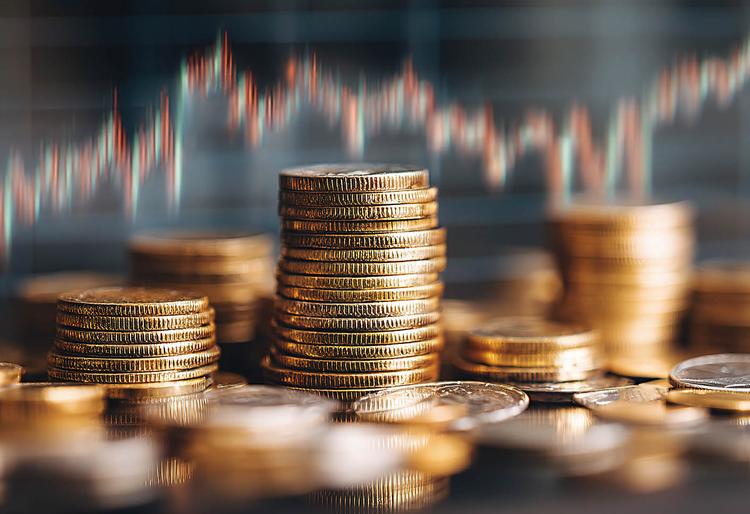
News

May 22, 2025
Gold and Silver Prices
Gold prices hit a two-week high on May 22 of $3,346.80 and ended Thursday at $3,295.65.
Silver prices have almost mirrored gold’s upward trajectory, with a weekly high of $33.697, and an ending price on Thursday of $33.05.
Platinum prices traded at a weekly high on Thursday of $1,089.90 and ended Thursday at $1,083.00.
Palladium prices traded at a weekly high on Wednesday of $1,055.00 and ended Thursday at $1,047.10
The gold-to-silver ratio has hovered around 100:1 this past week, closing at 97.80. Bullion investors have been anticipating a reversion of the ratio to its historical mean between 50:1 and 70:1—but it has remained persistently high.
Market Overview
The precious metals market was relatively volatile for the week of 5/19–5/22. This was driven by a confluence of geopolitical tensions, fiscal uncertainties, and shifting investor sentiment. This demand has been largely attributed to growing concern from investors about the U.S. national debt. On May 16, 2025, Moody’s downgraded the U.S. government’s credit rating from Aaa to Aa1, meaning they believe the government’s creditworthiness has weakened. This is largely due to the fear of increasing U.S. national debt, which is reaching the investor market as President Trump’s tax bill is set to go to the Senate for approval after it was passed in the U.S. House of Representatives by one vote.
It is important to note that the other two main credit rating agencies, Standard & Poor’s Global Ratings and Fitch Ratings, have not downgraded the U.S. national debt since President Trump’s term began.
The U.S. Treasury had a $16 billion auction of 20-year bonds on May 21, 2025. The bonds were sold at a yield of 5.047%, marking the highest yield since November 2023. When yields rise at an auction like this, it typically means that investors were not eager to buy the bonds, so the U.S. government had to offer higher yields to attract interest. This reflects a lack of confidence in the long-term fiscal direction of the U.S.
The uncertainty of investors over the past few months, stemming from rising fiscal deficits, the U.S. credit downgrade, global geopolitical tensions, and tariffs, has led investors to take safety in assets such as gold and silver.

April 10, 2025
Texas Precious Metals is excited to announce the launch of Y’all Street, a new streaming media platform dedicated to exploring the business side of entertainment, finance, sports, music, manufacturing, and more. Hosted by Texas Precious Metals co-founder and President, Tarek Saab, Y’all Street brings together fascinating guests to discuss their journeys, challenges, and successes in today’s ever-changing world.
First Guests: David Henrie, Cody Webster, and Tom Power
To kick off the launch, Y’all Street welcomes a powerhouse lineup of guests who represent diverse industries and experiences. The first episodes feature David Henrie, the actor turned entrepreneur, Cody Webster, the 5x PRCA Bullfighter of the Year and businessman, and Tom Power, the innovator revolutionizing manufacturing with precious metals. These conversations provide a unique opportunity to learn from individuals who have navigated the highs and lows of their industries, offering valuable insights into what it takes to succeed in both business and life.
Beyond Transactions Texas Precious Metals has always been interested in developing relationships with customers that are more than just buying and selling precious metals. Y’all Street extends that philosophy by creating a space where financial and business discussions feel personal. The podcast goes beyond market trends to focus on relationships, real experiences, and the bigger picture.
“It’s tough when you’re a business because, often, the relationship is transactional only. It’s ‘call me when you need me’ — you buy the metals, we sell the metals, and that’s it. I want to get away from that,” says Tarek. “I want people to get to know us, to develop a relationship so they feel like they can communicate with us, like we’re on this journey together. I’m interested in other people’s journeys too.”
Tarek continued, “We love Texas and seek to promote our state and its growing role in finance, tech, commodities, and of course – precious metals.”
Real Conversations with Real People Each episode of Y’all Street will feature in-depth conversations with these fascinating guests, sharing their experiences, challenges, and perspectives on their industries and journeys. The goal is to educate, inspire, and entertain — giving listeners a reason to come back, not just to buy, but to engage and be part of a larger conversation.
An Educational Edge In addition to real conversations and storytelling, Y’all Street features a video series, “Unlocking the World of Precious Metals,” designed to educate listeners on investing in precious metals and how the industry works. Created with first-time investors in mind, the series breaks down the world of gold and silver in a way that’s practical, approachable, and easy to understand.
Y’all Street also offers a dedicated Q&A series that dives deeper into how Texas Precious Metals operates and answers some of the most common questions about the industry. These episodes feature insightful conversations with the company’s co-founder and president, offering behind-the-scenes perspective and valuable knowledge for anyone curious about the business or looking to learn more about the precious metals space.
An Extension of the Texas Precious Metals Mission As a trusted name in precious metals, Texas Precious Metals has built its reputation on transparency, education, and long-term relationships with its customers. Y’all Street is a natural extension of that mission, offering a platform where people can connect, share ideas, and learn together. Expect engaging discussions, expert insights, and stories that provide real value. Y’all Street isn’t just another business podcast — it’s a community-driven platform built on trust, knowledge, and connection.
Stay tuned for upcoming episodes with exciting new guests in the world of business, entertainment, and beyond.

March 26, 2025
Shiner, TX – [March 26, 2025] – Texas Precious Metals, a leading precious metals dealer and dedicated supporter of the western sports community, is proud to announce its sponsorship of the Texas A&M Rodeo Team. This partnership reflects the company’s deep commitment to Texas traditions, rodeo culture, and the student-athletes who embody the spirit of hard work and perseverance embraced by Texans everywhere.
With a legacy dating back to 1919, Aggie Rodeo has been a cornerstone of collegiate rodeo for over a century and was instrumental in forming the National Intercollegiate Rodeo Association (NIRA). Today, the program continues to thrive, with over 50 rodeo athletes competing at regional and national levels. As the team transitions from a club sport to varsity status, Texas Precious Metals recognizes the change as an exciting opportunity to support the next generation of rodeo champions.
“When Tarek with Texas Precious Metals reached out to learn about our program and shared their rich history in Texas, I knew this was a perfect connection,” said Aggie Rodeo Coach Roger Hanagriff. “We are excited to gain a partner who sees our vision, aligns with our core values, and is helping our team and students achieve our goals.”
Texas Precious Metals is a proud supporter of the Professional Rodeo Cowboys Association (PRCA), sponsoring major events such as Pro Rodeo, the National Finals Rodeo (NFR), World’s Toughest Rodeo, and The Governor’s Cup. This new partnership with the Texas A&M Rodeo Team strengthens the company’s ties to western sports and highlights its longstanding dedication to the Aggie community.
“As an Aggie-owned business, we take great pride in supporting Texas A&M students and athletes,” said Tarek Saab, Co-founder and President of Texas Precious Metals. “The Texas A&M Rodeo Team has a rich history, and we are honored to contribute to its continued success as it moves into this exciting new chapter.”
With this sponsorship, Texas Precious Metals reinforces its commitment to preserving Texas’ rodeo heritage while investing in the future of collegiate rodeo.

November 01, 2022
Gold demand firmer in Q3
Healthy Q3, driven by stronger consumer and central bank buying, helped year-to-date demand recover to pre-COVID norms.
Gold demand (excluding OTC) in Q3 was 28% higher y-o-y at 1,181t. Year-to-date (y-t-d) demand increased 18% vs the same period in 2021, returning to pre-pandemic levels.
Jewellery consumption reached a robust 523t, increasing 10% y-o-y despite the deteriorating global economic backdrop. Y-t-d demand is slightly firmer (+2%) at 1,454t.
Investment demand (excluding OTC) for Q3 was 47% lower y-o-y at 124t, reflecting weak sentiment among some investor segments. 36% growth in bar and coin investment (to 351t) was insufficient to offset 227t of ETF outflows. OTC demand contracted significantly during the quarter, echoing weak investor sentiment in ETFs and futures markets.
Central banks continued to accumulate gold, with purchases estimated at a quarterly record of nearly 400t.
An 8% y-o-y fall in technology demand reflected a fall in consumer demand for electronics due to the global economic downturn.
Total gold supply increased marginally (+1% y-o-y) to 1,215t. A sixth consecutive quarter of y-o-y growth in mine production was partly offset by lower levels of recycling.
Highlights
The LBMA gold price PM (US$/oz) fell by 8% during the third quarter. The decline was largely a response to US dollar strength as the Fed hiked interest rates to combat high inflation. However, the average gold price in Q3 was only 3% lower y-o-y, more closely aligning with the relative performance of demand (OTC inclusive) and supply during the quarter.
Investment demand diverged on differing priorities. Retail investors bought gold as a store of value amid surging global inflation, while ETF investors reduced their holdings in the face of rising global interest rates.
India generated much of the global recovery in jewelry. Urban consumers were the engine of Indian demand in Q3, encouraged by a return to pre-COVID levels of economic activity. Rural consumers were more cautious as their inflation outpaced that of their urban counterparts.
Chinese retail demand firmed as lockdown restrictions eased. Jewelry consumers benefited from a pullback in the gold price as lockdown restrictions eased in key cities. And retail investors were encouraged by gold’s safe-haven appeal amid a depreciating local currency and falling local equity prices.

April 28, 2022
Gold market sees solid start to 2022
Q1 gold demand was 34% above Q1 2021, driven by strong ETF inflows
In a quarter that saw the US dollar gold price rise by 8%, gold demand (excluding OTC) increased 34% y-o-y to 1,234t – the highest since Q4 2018 and 19% above the five-year average of 1,039t. The Ukraine invasion and surging inflation were key factors driving both the gold price and demand. Gold ETFs had their strongest quarterly inflows since Q3 2020, fuelled by safe-haven demand. Holdings jumped by 269t, more than reversing the 174t annual net outflow from 2021. Bar and coin investment was 282t in Q1, 20% lower than the very strong Q1’21 but 11% above its five-year quarterly average. Renewed lockdowns in China and historically high local prices in Turkey were key contributors to the y-o-y decline. Jewellery consumption lost momentum in Q1: demand was down 7% y-o-y at 474t. The drop was largely due to softer demand in China and India.Central banks added 84t to global official gold reserves during the first quarter. Net buying more than doubled from the previous quarter but fell 29% short of Q1'21.The technology sector had a steady start to the year: demand of 82t was the highest for a first quarter since 2018, driven by a modest uptick in gold used in electronics.
Q1 gold demand increased y-o-y as strong ETF flows offset weaker jewellery and retail investment
Global quarterly demand by sector*

Sources: Metals Focus, World Gold Council; Disclaimer*Data to 31 March 2022
Highlights
The LBMA Gold Price PM gained 8% in Q1, its best quarterly performance since Q2 2020. The average quarterly price of US$1,877.2/oz was around 5% higher than in the first quarter of last year.Gold mine production was 3% higher y-o-y at 856t. China resumed near-full production following safety-related closures, while higher grade ores were mined at various existing sites. The supply of recycled gold jumped to 310t (+15% y-o-y). This was the strongest first quarter for gold recycling activity for six years.After a strong start to Q1 in China, demand came to a virtual halt in March. Tough new lockdowns imposed to contain a resurgence of COVID-19 had a marked impact on demand for jewellery, bars and coins.
